You’re going away for the weekend to Budapest and would like some inspiration on what to do there? Lukas and I spent more than a week in the Hungarian capital; we walked at least a hundred kilometres, tried more cafes than is healthy and tasted so much food that we gained at least two kilos each. Let’s take a look together at what to see in Budapest.
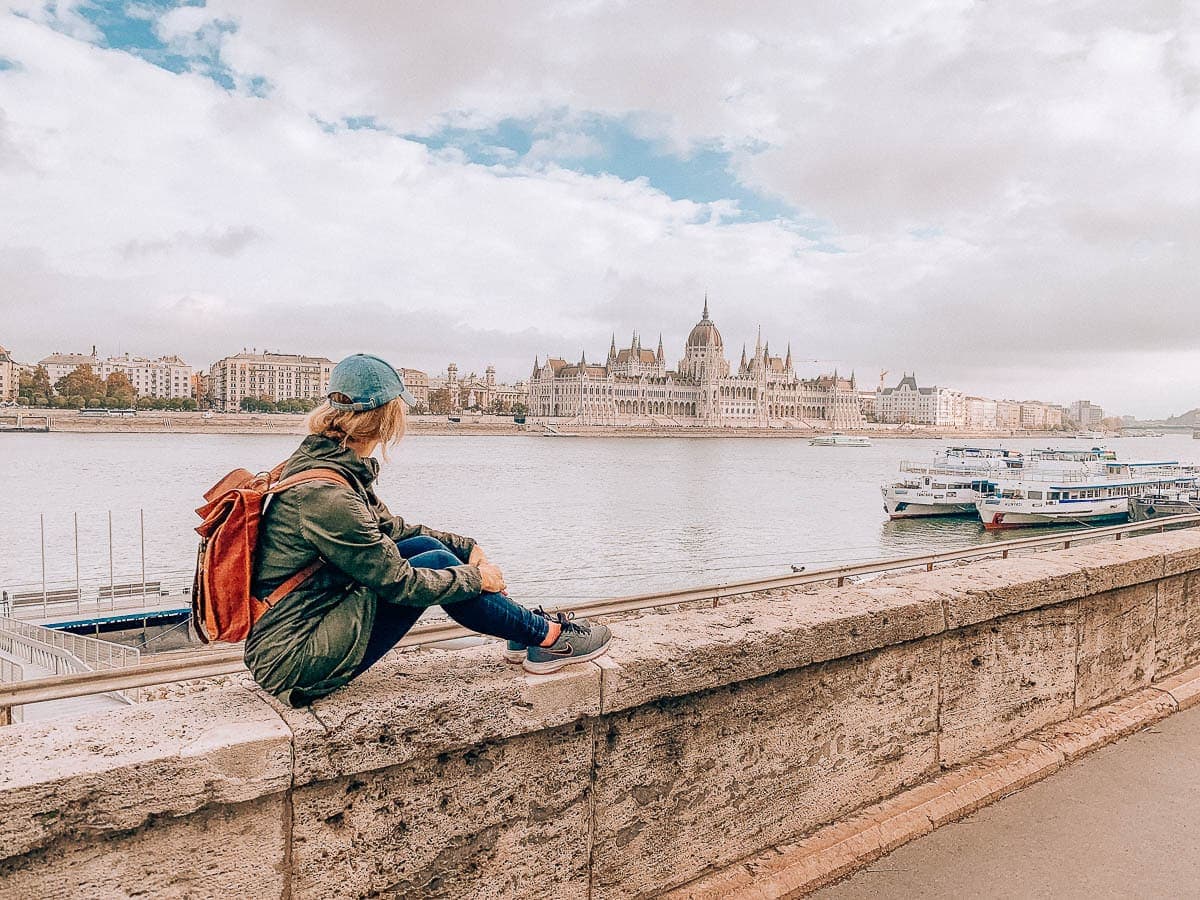
Budapest is not just a city with beautiful architecture and good coffee, but a place where you’ll find amazing chop shops, designer shops, restaurants to satisfy the hungriest of palates and famous ruin pubs.
When to go to Budapest?
I’ve been to Budapest in just about every season and the best time to visit Budapest is spring (April-June) or autumn (September-October). In summer, Budapest tends to be quite hot and also full of tourists. And winter in Budapest? If it doesn’t snow, which doesn’t happen very often in Budapest, it is under a cloud and quite cold.
How to get to Budapest?
You can go to Budapest by car, train, bus (for example, you can go FlixBus ) or by plane. From Prague it is approximately 5-6 hours by car. If you choose to fly, it is approximately a 1 hour flight from Prague. Read, how to get cheap flights.
Where to stay in Budapest?
I recommend staying right in the centre, you can easily walk almost all of Budapest and save time and money on transport. If you are looking for cheap accommodation, try the Flow hostel, where we stayed when we saved every penny. It’s a rather designer and nice hostel, a short walk from the market and super money.
For those of you looking for more luxurious accommodation, I recommend Hotel Vision, which we stayed at last year and it has great breakfasts, location and beautiful rooms. It’s stunning, but quite expensive. Aria Hotel Budapest by Library Hotel Collection . The Eurostars Danube Budapest, the Novotel Budapest Danube or the Milford Suites Budapest are such golden centres .
How to get around the city: Public transport in Budapest
We recommend staying in the centre so you can mainly explore Budapest on foot, but it’s easy to get to more distant places by public transport.
For this you can use the BKK FUTÁR public transport app , which provides information about public transport in Budapest.
35 top tips on what to do and see in Budapest
Now let’s take a look at what to do in Budapest and how to enjoy the city to the max.
Freedom Bridge – Szabadság híd
We start our walk at Szabadság híd. This historic bridge connects two parts of Budapest. It is as photogenic in itself as the view from it. If you give up on us and stay in Flow hostel you’ll be a few minutes’ walk away.
Buda Castle (Budai Vár, Budin kalesi)
Buda Castle (Budai Vár in Hungarian) is the main structure of Budapest’s Castle Hill and can be easily reached on foot from the Freedom Bridge. Like our Prague Castle, Buda Castle is a complex of palaces and a medieval town with several other important monuments, including the Fisherman’s Bastion and Matthias Church. From Buda Castle you can see the opposite bank, where you can see the huge Hungarian Parliament building.
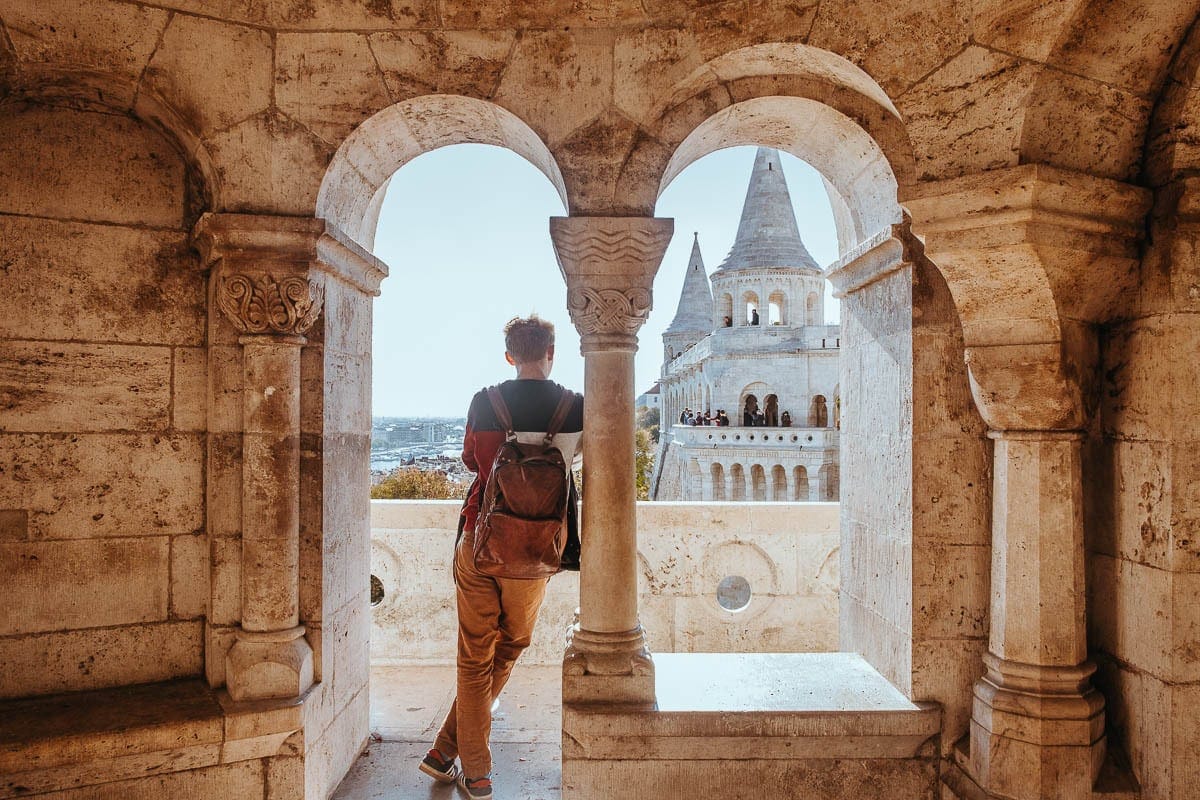
Fisherman’s Bastion in Hungarian Halászbástya
The Fisherman’s Bastion is also part of the palace complex on Castle Hill. This place is every photographer’s dream. Romantic arches, magnificent views of the river and Parliament in the background.
Probably the most beautiful photos from Budapest are taken here at the Fisherman’s Bastion. No wonder, from this neo-Gothic and partly neo-Romanesque representative terrace you can see the river and the majestic Budapest Parliament. But beware, even in the off-season there is an incredible amount of people here. So head here early in the morning. There is also a beautiful Matthias Church near the Fisherman’s Bastion. Don’t worry, you can’t miss it.
St. Matthias Cathedral in Budapest
St. Matthias Church, officially the Church of the Assumption, is one of the most important symbols of Budapest and the whole of Hungary. Although the original church was destroyed by Mongol invasions and built in 1015, the present Gothic church dates from the mid-13th century. century.
It has been modified and rebuilt many times over the centuries, which is evident in its architectural mix. It was the centre of many historical events, including the coronation of the Hungarian kings. The name “Matthias Temple” was created in honour of the Hungarian king Matthias Corvinus from the 15th century. century. The temple is open to visitors and offers breathtaking views from the tower. It is located in the historic centre of Buda, next to the Fisherman’s Bastion.
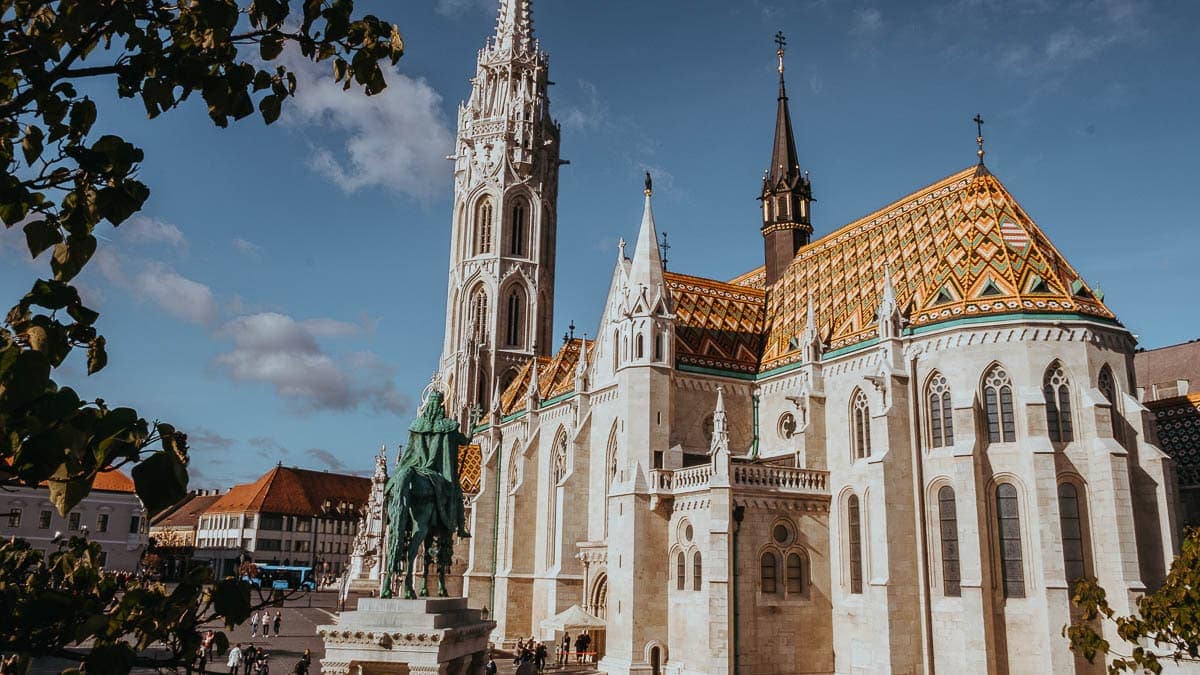
Gellert Mountain
If you have good weather, you can go to Gellertova hora on the way back from the Fisherman’s Bastion. Gellért’s Mountain is a kind of Hungarian Petřín, just don’t expect a cable car there. At the top of the hill is a military citadel, next to which is the statue of Liberty with the goddess Nike. The divine view of Buda Castle will probably attract you the most.
Military citadel
As we have already said, the military citadel stands on Gellért Hill and was built in 1848-1849, when the Hungarian Revolution against the ruling Habsburgs took place.
Statue of Liberty
The Statue of Liberty stands on a 14-metre high pedestal and was erected in 1947 to commemorate the victory of the Red Army.
Budapest Parliament (Országház)
With 691 seats, the Parliament of Budapest is one of the three largest parliaments in the world. For me, he’s probably the most impressive. When Imre Steindl designed it, he didn’t want anything extravagant, he just wanted to capture the Hungarian spirit “modestly”.
And the result? 88 statues of important figures of Hungarian history and countless coats of arms decorating its facade. Well, modesty above all. If you wanted to go through all the rooms, you would need at least two days.
60 pairs of iron shoes
A short walk from the Parliament building, 60 pairs of iron boots on the banks of the Danube remind Budapest residents and visitors of the massacre of Jews during World War II.
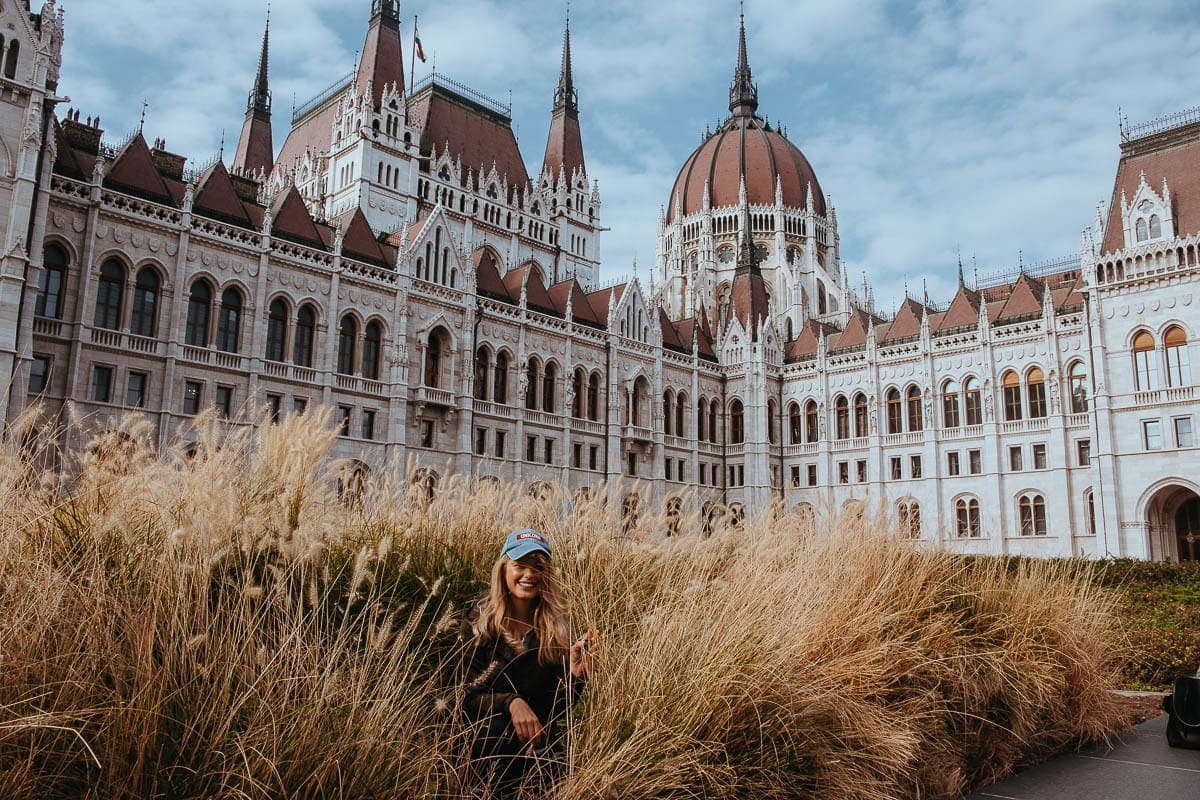
Széchenyi lánchíd Bridge
If you walk further away from the Parliament, you will reach the famous Széchenyi lánchíd Bridge. The Széchenyi lánchíd Bridge in Budapest is the first of eight bridges connecting the cities of Buda and Pest. It was built in 1849 at the instigation of Count István Széchenyi and designed by British engineers William and Adam Clark.
Interesting fact: Although it is sometimes referred to as a “chain bridge”, it is actually a suspension bridge. At the time of its commissioning, it had a span of 202 metres, making it one of the largest in the world. On the Buda side of the bridge the Buda Tunnel under the Castle Hill is connected.

Margaret Island – Margitsziget
Margaret Island is an oasis of peace and quiet on the Danube. You’ll find it in the middle of Budapest, and it’s a great place when you want to take a break from the busy tourist city. There are beautiful Japanese gardens, a hidden thermal bath and a small zoo.
Margitsziget Singing Fountain
The biggest free attraction in Budapest is the Singing Fountain, which dances to the rhythm of music on Margaret Island. If you arrive here at night, you will also see a light show that would put even Signalfest in Prague to shame. It is on the UNESCO list.
Water tower
The water tower now serves as a lookout tower and can also be found on Margaret Island. It dates back to 1911 and is now a UNESCO World Heritage Site.
The best spa in Budapest
If you are going to Budapest, you should definitely not miss the spa. Let’s take a look at the best spas you can visit in Budapest.
Szécheney Spa
Not for nothing is Budapest called the “Spa of Europe”, the capital of Hungary is situated on 125 thermal springs. The most popular spas are the huge Szécheney Spa which is where we went.
Széchenyi Thermal Baths in Budapest, located in Pest’s City Park, is one of the largest spa complexes in Europe with a history dating back to 1913. The spa has impressive neo-Gothic grounds and offers a wide range of attractions, including bubble benches, geysers and a chess zone.
The spring, which supplies the spa with hot water, was discovered in 1876 and comes from a depth of 1,256 m with a temperature of 76°C. The spa was built according to the design of Győző Czigler and has been extended several times, the last extension being in the 1960s. years 20. century.
Spa admission includes a locker, access to the outdoor and indoor pools and sauna. A range of treatments are available, including massages and beer baths. The water from the spring has healing effects, especially for degenerative joint diseases and arthritis.
If you are planning a visit to the spa, it is recommended to book at least four hours and then explore the nearby tourist attractions of Budapest, including Heroes’ Square, the Zoo and Vajdahunyad Castle.
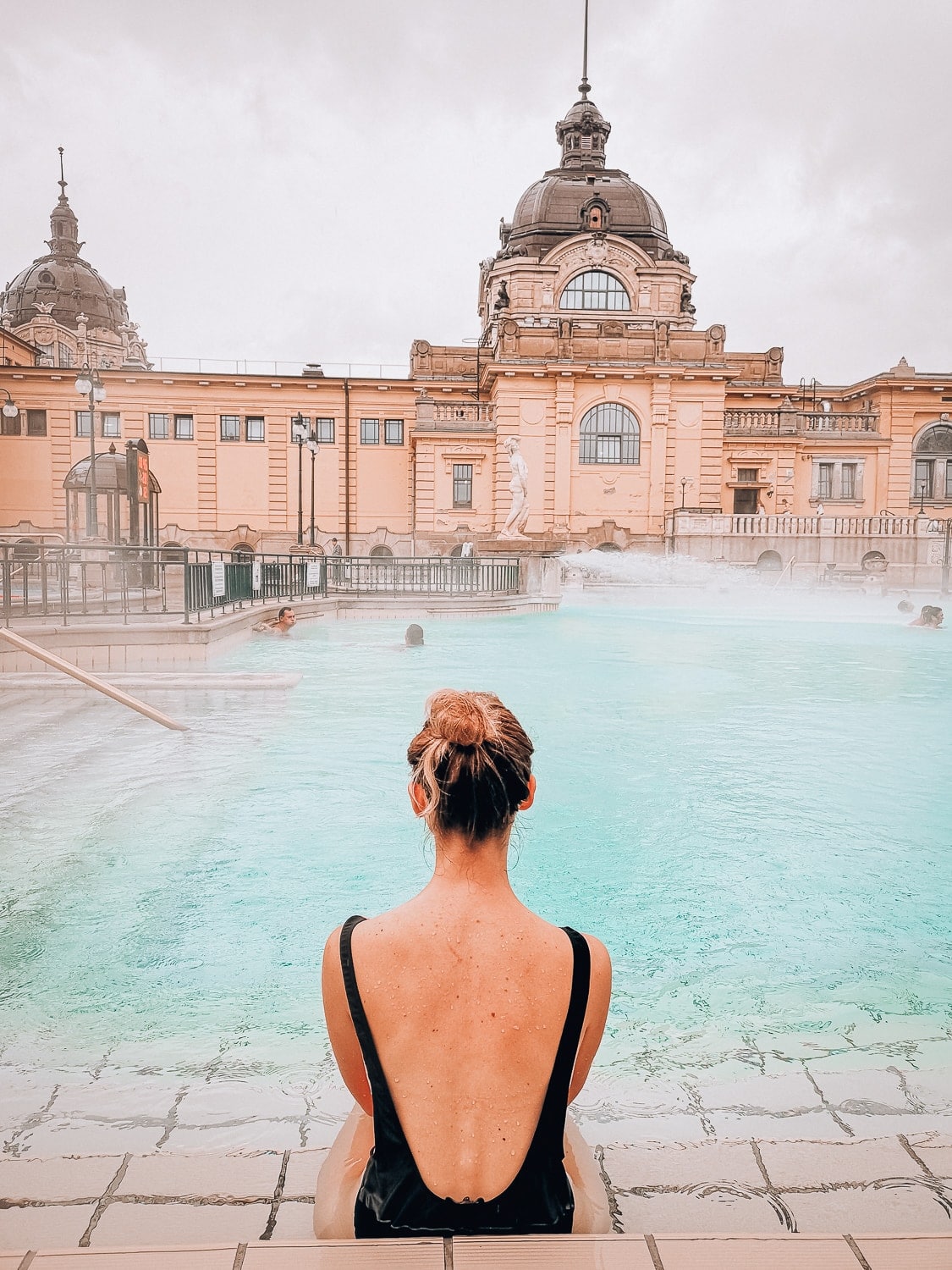
Vajdahunyad vára
Near the baths is the Vajdahunyad vára, which was originally built of wood as a backdrop for the millennium celebrations in the 19th century. century.

Gellert Baths
If you will be staying in hostel Flow , just cross the river and you will be at the Gellert Baths (15). While Szécheney’s mainly outdoor pool is beautiful, Gellert’s Baths boasts the nicest indoor pool.
Rudas Baths – Rudas Gyógyfürdő Baths
Rudas Baths, also known as Rudas Gyógyfürdő, are one of the oldest and most famous thermal baths in Budapest. It is located on the right bank of the Danube at the foot of Mount Gellért and their history dates back to the Turkish era 16. century. This historic spa centre is famous for its imposing dome and octagonal pools, a reminder of Ottoman architecture.
The water from the spa comes from a thermal spring, which is rich in calcium, magnesium and other minerals, and is known for its healing effects on joints, muscles and skin.
Rudas Baths offers various therapeutic treatments, including massages, saunas and steam baths. In addition to the traditional Turkish bath, visitors will find a modern wellness centre with panoramic views of the Danube, making the spa an ideal place for rest and relaxation.
In the traditional part of Rudas, there are separate days for men and women, allowing guests to have an authentic Turkish experience. However, the modern wellness centre is open to both sexes every day.
Király Baths
Király Baths is a historic spa centre in Budapest, built in the 16th century. century during the Ottoman rule. This spa has retained its authentic Turkish atmosphere with its imposing domes and stone columns.
Veli Bey Baths
Veli Bej Baths are one of the oldest thermal baths in Budapest. They were originally built in 16. century during the Ottoman era, but have recently undergone extensive reconstruction. Today’s visitors can appreciate the combination of historic architecture and a modern wellness centre. The healing water is known for its positive effects on rheumatic diseases and circulatory disorders.
Lukács Baths
Lukács Baths have a rich history dating back to the Middle Ages. Over the years, it has become a popular place among artists and intellectuals. The spa offers a wide range of therapeutic treatments and wellness services. The water sources of the spa are known for their healing properties, especially for the treatment of degenerative joint diseases.
Danubius Health Spa Margitsziget
Located on the picturesque Margitsziget Island in the middle of the Danube, the Danubius Health Spa is a modern wellness centre offering a combination of therapeutic and relaxing treatments.
What to take to the spa in Budapest
In addition to your swimsuit, bring your own bathing cap, slippers, water and towel. Rental fees can be overpriced at some spas. Yes, most spas won’t let you in without a bathing cap. Before going to the spa, check who the spa is open to that day (women, men, mixed). Szécheney Spa is always mixed.
Tip: Go to sparties or spa parties
If you want to party in Budapest, you shouldn’t hesitate to wear your swimsuit and book a place at one of the local magical parties in the thermal baths. Nowhere else in central Europe can you party by the pool all year round with a fabulous light show. Most of the sparties are on Saturday.
Where to go for coffee, food and beer in Budapest
Romkocsma, in English Ruin Pub, in Czech probably ruin pub, or semi-decayed pub. Anyway, these are pubs with a great atmosphere, unusual interior and good beer. The most famous one is Szimpla Kert, where we also went. If you want to avoid the crowds, go on Thursday.
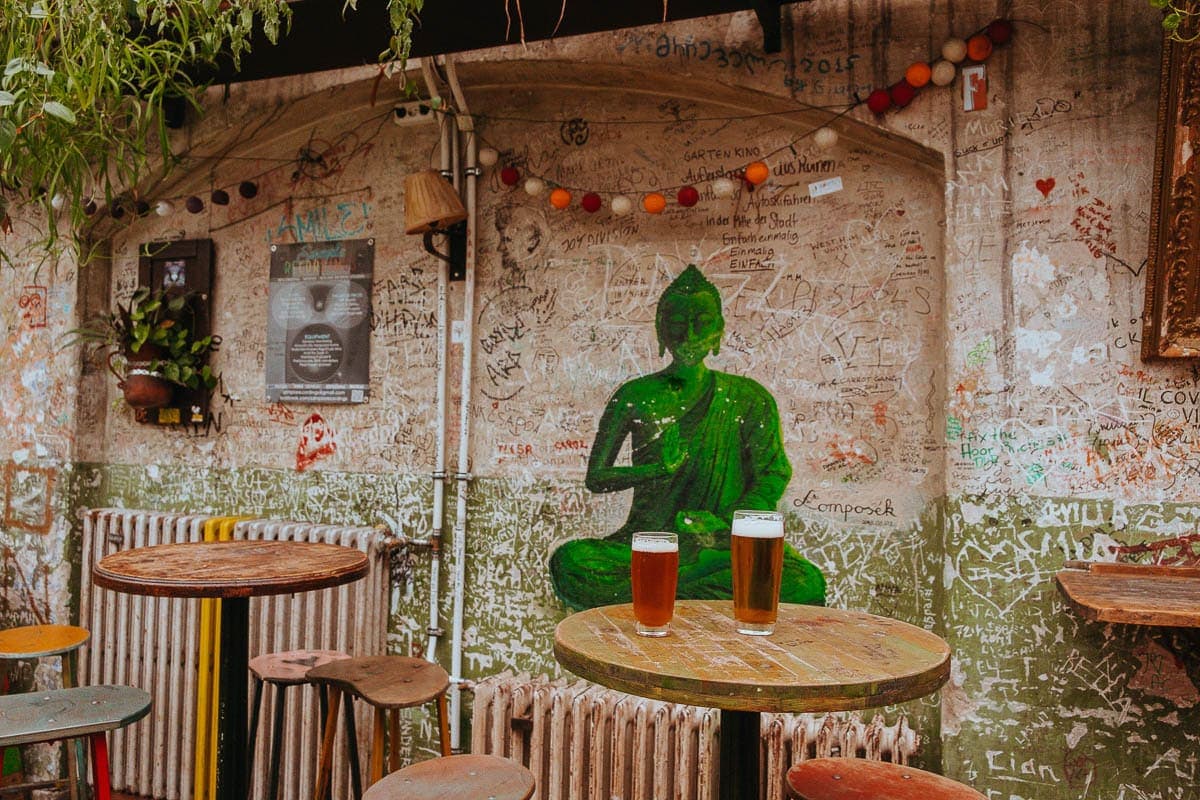
Szimpla Kert
Szimpla Kert, located in the heart of Budapest, is considered the first “ruin bar” in the city and is one of the most famous and most visited nightclubs in Budapest. What started as a temporary bar in an abandoned building has quickly become a cultural hub combining bars, cafes, galleries and open spaces for events.
The interior of Szimpla Kert is a combination of art installations, antique furniture and colourful lights, creating a unique and bohemian atmosphere. The venue is divided into several different areas – from the main bar, to secret corners, to an open garden where concerts and film screenings take place.
Caravan – great street food
Whether you like street food or not, you will absolutely love this place. In the same neighborhood as the ruin pubs, there is the Caravan, a place full of hipster food stalls. There’s something for everyone. It offers Mexican, Thai and Hungarian food, vegan burgers for vegans and delicious waffles for sweet lovers. The coffee is great, but most people come here for a beer.
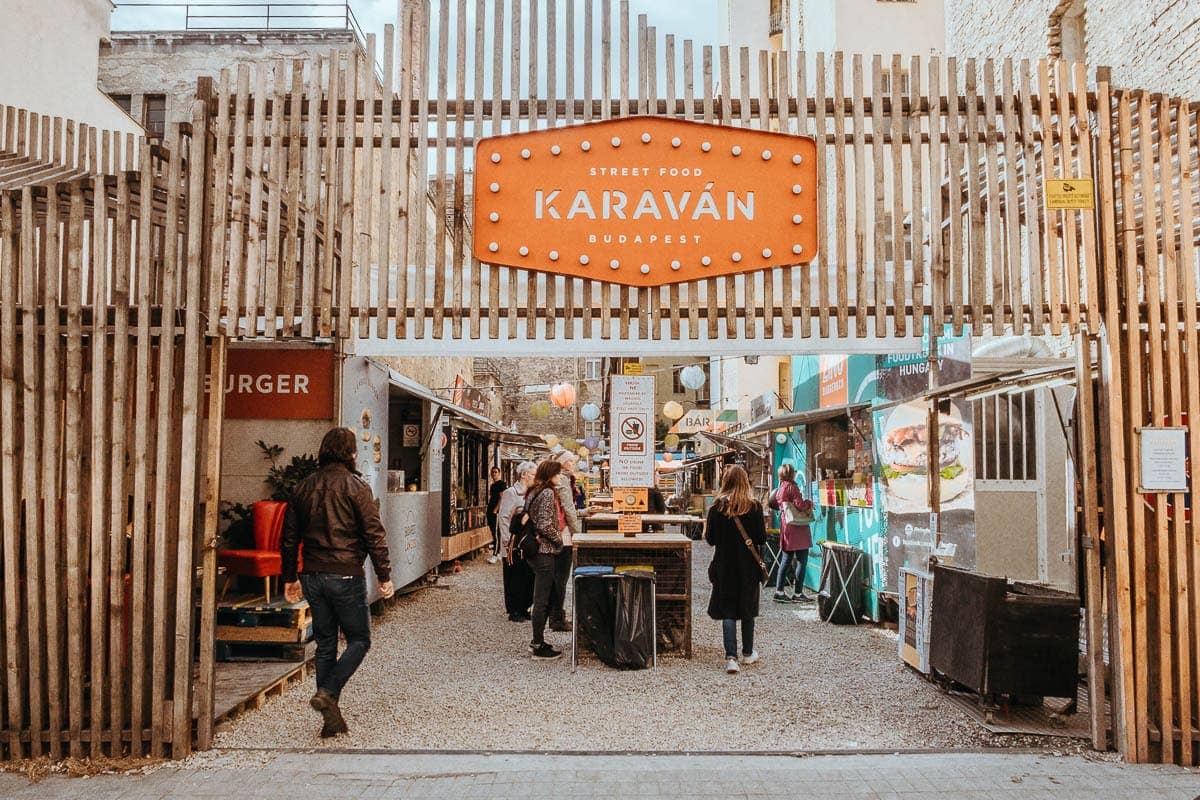
Mazel Tov – the best restaurant in Budapest
I was a little worried that Mazel Tov would be out of our budget. But this famous Israeli restaurant also surprised with its prices. They’re slightly higher, but definitely not terrible (and certainly a lot cheaper than if you went out to eat in Israel 😀 ). But the food you get here is top-notch, unconventional and high quality. The setting of Mazel Tov is truly romantic, make sure to make a reservation during the tourist season.
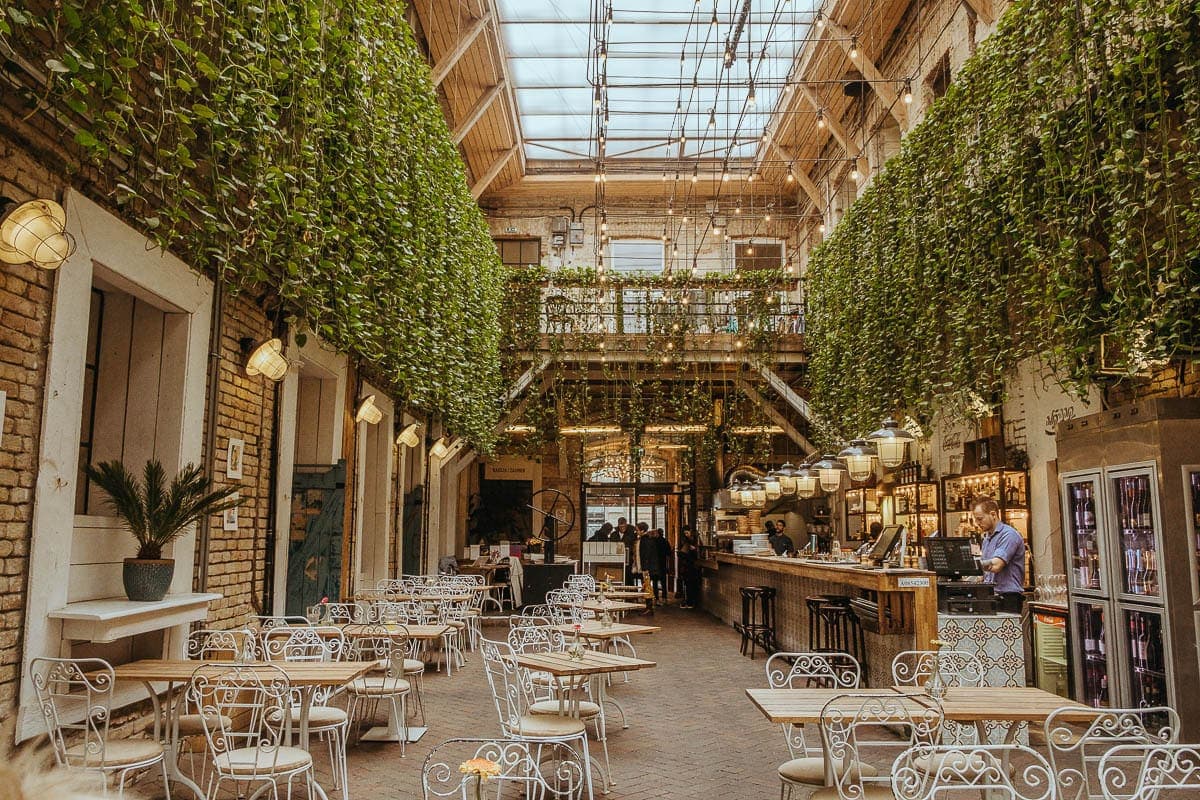
Where to go for coffee in Budapest
We were probably looking forward to the cafes in Budapest the most. We love coffee and the café life in Budapest is booming. Just in the month we were gone, several more hipster cafes opened in Budapest! We liked the most:
- Contact.
- Cafe Madal,
- and Torokmez
For our full list of the best cafes, check out you can read here .
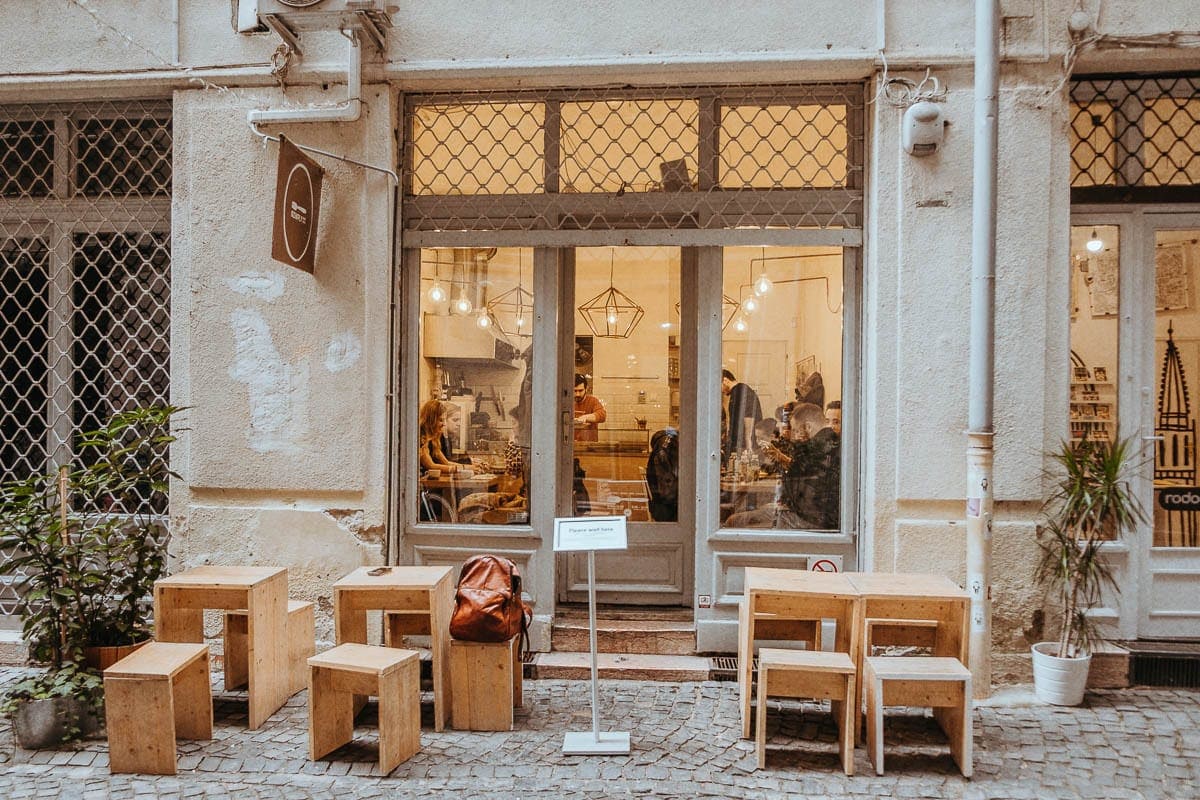
Where to go for brunch in Budapest
Budapest may be even better at brunch than Prague. Avocado sweet potato toast, sushi pancakes, French croissants or American pancakes, you’ll find it all in Budapest. We liked the brunches the best
- in Budapest Baristas,
- Shimply
- and the Blue Bird Cafe.
All tips for brunches can be found in the same article as cafes .
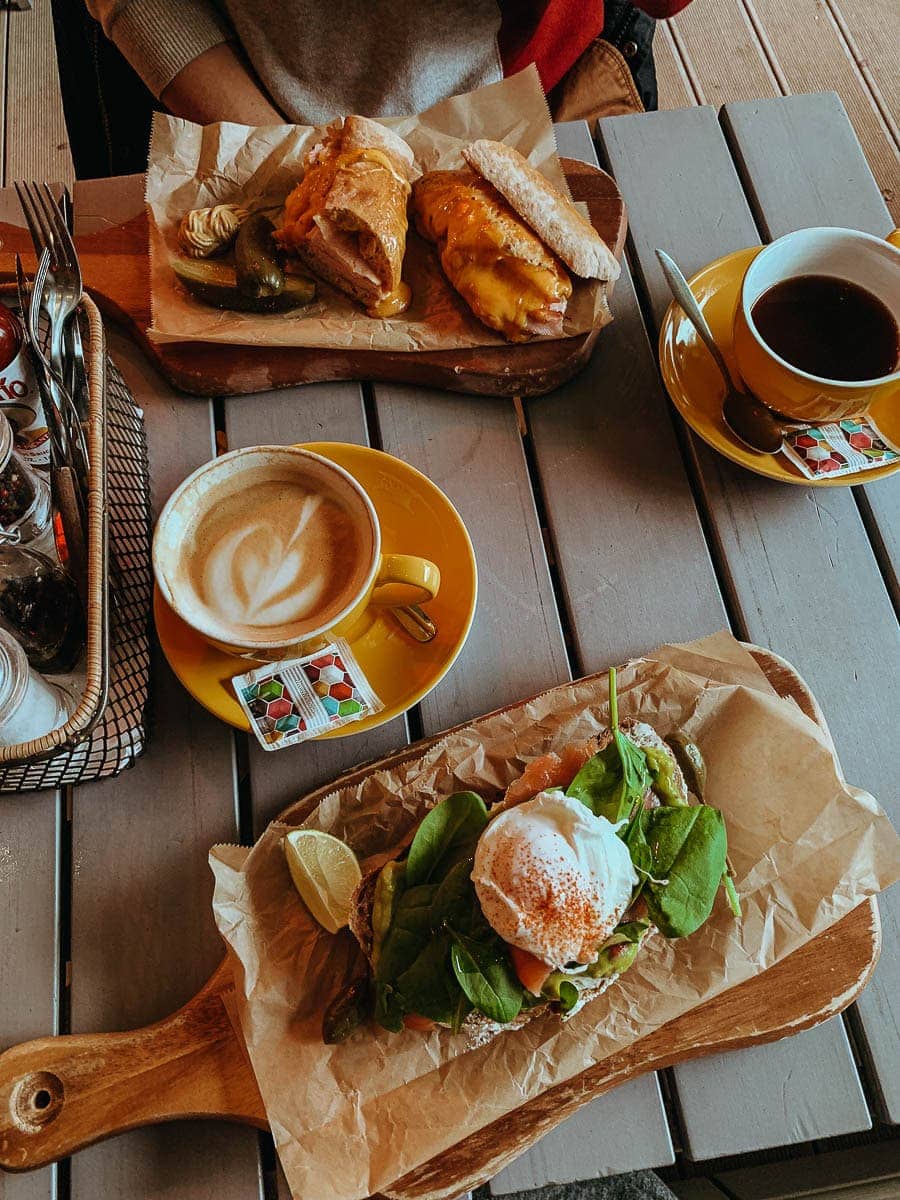
Budapest Market – Nagy Vásarcsarnok
For Hungarian delicacies and souvenirs, be sure to head to Nagy Vásarcsarnok, a market next to the recommended Flow Hostel. And what to buy? Try the goulash or traditional Hungarian langos. As a souvenir you can buy Hungarian paprika (spices) or dried chillies. They are rightly proud of their peppers here.
Tips for interesting vintage shops and chop shops in Budapest
One of our favourite activities in Budapest was going to the chop shops and design shops. They’re everywhere and they’re amazing. And we hardly go to second hand shops, we are not such fans. But they are perfect in Budapest! What we liked the most:
- in Szputnyik Shop, which has several branches in Budapest, and the
- LoveBug Vintage,
- Antifactory Vintage Shop.
Be careful, before you go, check the opening hours online.
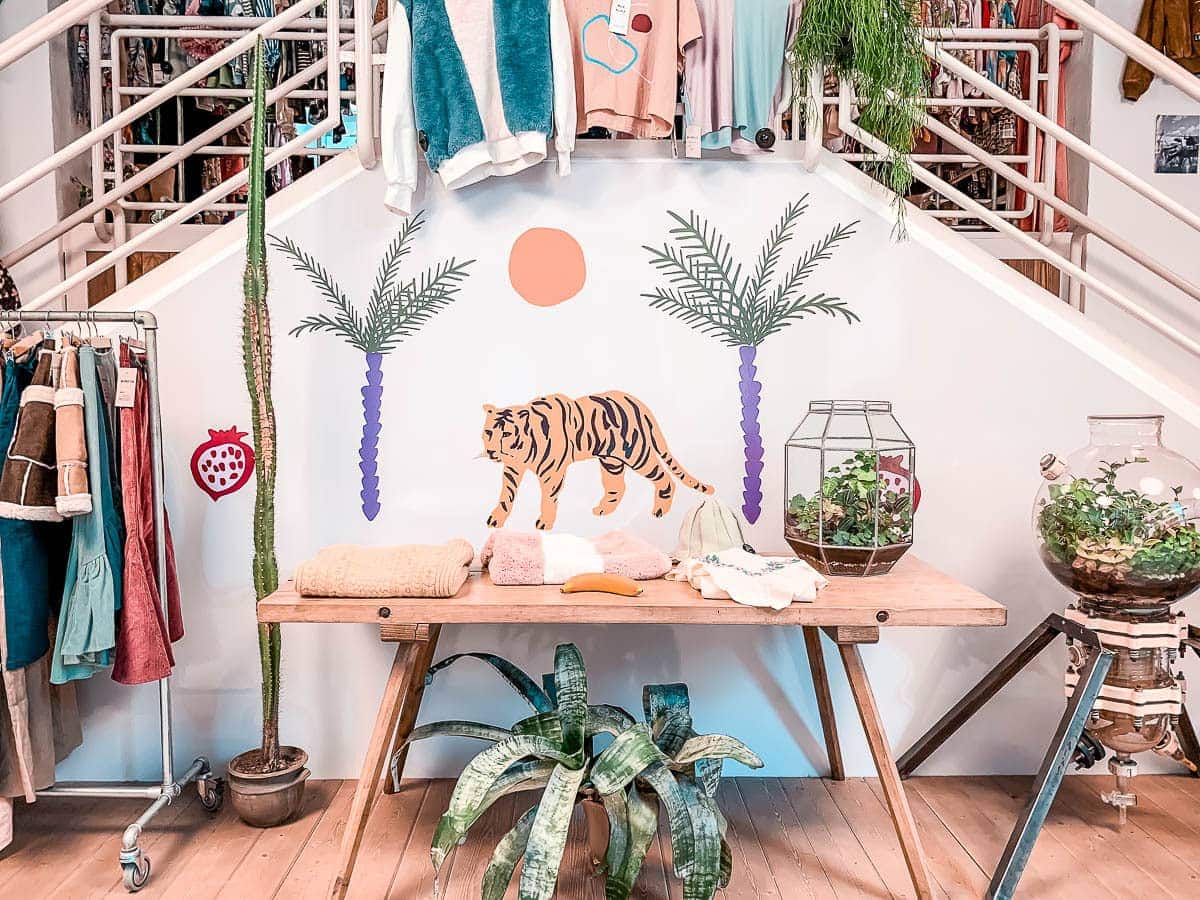
Where to go for a sweet treat in Budapest
If you love sweets, you simply must come here. Mr. Funk is probably the most popular sweet shop in Budapest. With her unicorn-shaped donut shakes, she clearly wins the top spots not only with food bloggers on Instagram. Beware, one overpriced cocktail can supposedly feed up to five people.

Gelarto Rosa, a place where they make ice cream in the shape of a rose, comes in second place. Unfortunately, Luky and I didn’t try either, because we avoid sweets. 🙂
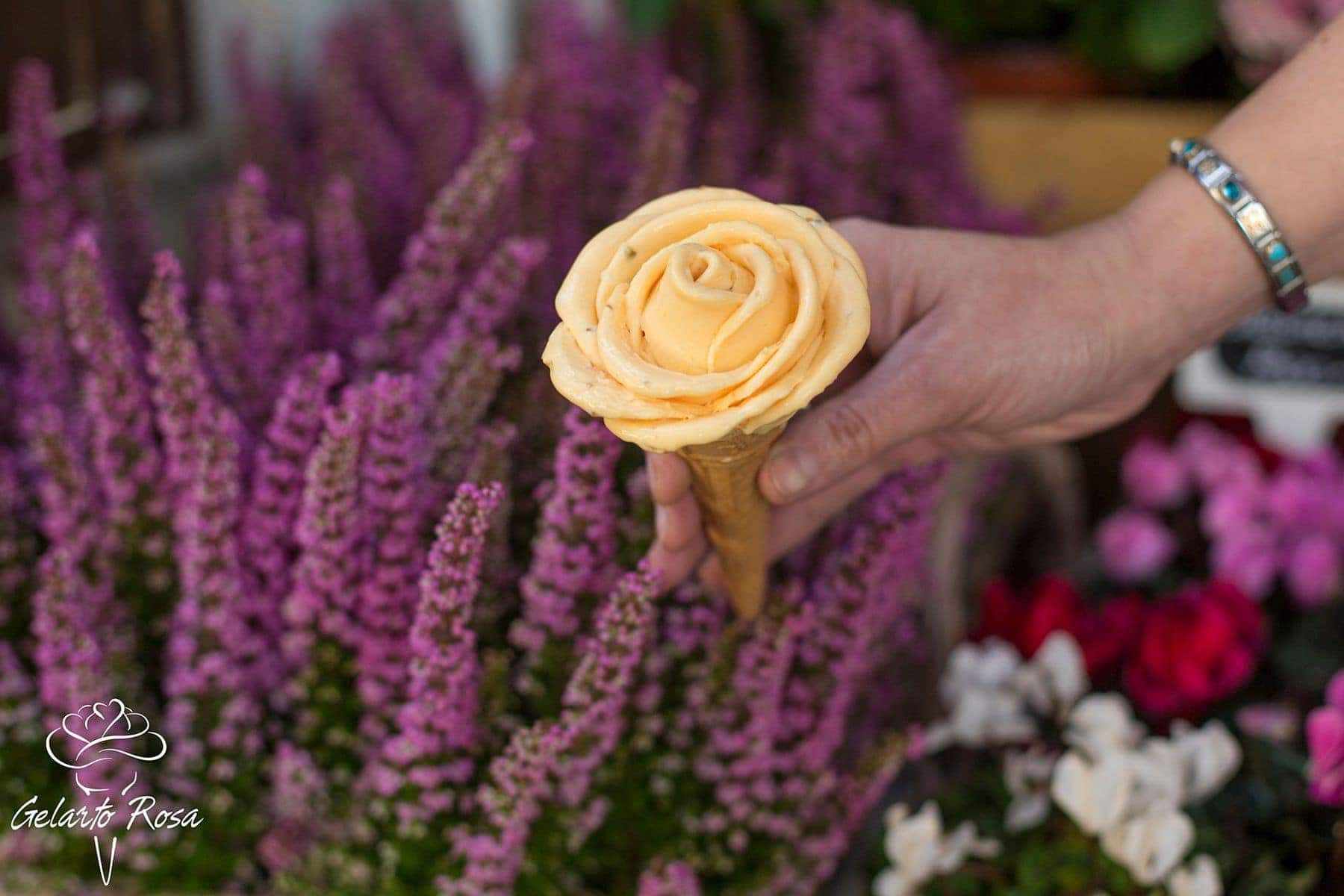
What to do in Budapest when it rains – museums to visit
There are more than 50 museums to visit in Budapest. If you like art, visit theHungarian National Gallery; if you are interested in the Nazi past, the House of Terror is very interesting . I recommend checking out GetYourGuide, where you will find some very interesting activities that you wouldn’t get to otherwise. Here you can buy, for example, a tour of the caves in Budapest or a guided tour of the Parliament.
Hungarian National Museum (Magyar Nemzeti Múzeum)
Located in the centre of Budapest, it is home to a rich collection of objects that trace the history and culture of the country. The museum has exhibitions ranging from prehistory to the Middle Ages to the modern history of Hungary.
Museum of Fine Arts (Szépművészeti Múzeum)
One of the largest museums in Hungary, in addition to permanent exhibitions there are also temporary exhibitions. Before visiting, check out the museum’s website .
House of Terror (Terror House)
This museum is dedicated to the periods of Nazi and Communist rule in Hungary. The exhibitions show the dark history of the country during the 20. century and are a moving reminder of the victims of these regimes.
Hungarian National Gallery (Magyar Nemzeti Galéria)
It is located in the Royal Palace at Buda Castle and you will find there collections of Hungarian art from the Middle Ages to the present day. It also includes many works by important Hungarian artists.
Budapest History Museum (Budapesti Történeti Múzeum)
Located in the palace of Buda Castle, this museum is dedicated to the history of Budapest itself. Exhibitions include archaeological finds, historical models of the city and much more.
Jewish Museum (Magyar Zsidó Múzeum és Levéltár)
This museum, often associated with the Dohány Street Synagogue, is dedicated to the history and culture of the Hungarian Jewish community. It hosts a number of exhibitions on the Holocaust and the life and fate of Jews in Hungary.
Tip: Romantic boat ride
As in other cities, Budapest has GetYourGuide (we used it extensively in Rome as well), where you can buy tickets in advance so you don’t have to queue, but more importantly, you can use it to buy, for example, boat rides or guided themed tours of Budapest (about vampires and myths, for example).
What to do in Budapest with children: Aquaworld Budapest
Aquaworld Budapest is one of the largest indoor water parks in Europe. It has 17 pools, including thermal pools, whirlpools, wave pool and many more. There are also 11 slides, including some for small children and some for more adventurous visitors.
The water park is part of the Aquaworld Resort, which also includes a hotel and wellness centre. The hotel complex offers rooms and suites for guests who want to enjoy more than just a day of water attractions.
What to taste in Budapest: traditional Hungarian food
Hungarian cuisine is quite similar to Czech cuisine but it is a bit spicier. Because we were once part of the Austro-Hungarian Empire, most of the dishes or their variants are also familiar in the Czech Republic.
Gulyás (goulash)
Traditional beef soup with onions and peppers. It is often served with dumplings. The Czech version of the goulash is thicker and less spicy, but both versions have a similar composition and seasoning.
Pörkölt – Hungarian goulash
A spicy goulash, usually of beef, pork or chicken, served with cakes or potatoes. In the Czech Republic, this variant is known as Hungarian goulash.
Halászlé (fish soup)
Spicy fish soup, usually prepared with carp. In the Czech Republic we know Christmas fish soup, how similar they are, you will have to judge for yourself. I personally don’t put fish soup in my mouth.
Töltött paprika (stuffed peppers)
Peppers stuffed with meat mixture and cooked in spicy tomato sauce. Even in our kitchen we know stuffed peppers.
Meggyleves
Cold cherry soup, often served in summer. I’ve had similar cold fruit soups in school, I think it was strawberries. But I haven’t seen it anywhere in recent years. But I guess our grandmothers knew similar food.
Rakott krumpli
A layered dish of potatoes, sausage, eggs and cream. It has similarities with Czech potato stuffing.
Lángos – lángos
Sourdough fried dough, often served with garlic, cream and grated cheese. It’s simply lángos as we know it from fast food.
Főzelék
A thick vegetable soup often served with sausage or other meats.
Frequently asked questions and answers about Budapest
What to see in Budapest in one day
I would definitely go for a walk through Szabadság híd past Gellért Mountain, through Buda Castle to the Fisherman’s Bastion. In one day you can catch Parliament and maybe even one spa.
Is Budapest safe?
Budapest is generally a safe city, but as in any big city you need to be careful. Beware of taxi drivers, who, like in the Czech Republic, are notorious for cheating. There’s just as much risk of petty pickpocketing.
What to do in Budapest with children?
Popular attractions for children include the Zoo, Tropicarium, Children’s Island on Margit Island, Aquaworld and Miniversum (a miniature model of Hungary).
Where are the Christmas markets in Budapest?
The markets are open from the end of November to the end of December. They are always on Vörösmarty tér (square) and at St. Stephen.
What are the best spas in Budapest?
This is subjective, but Szécheney and Gellert’s baths are definitely among the most popular.
Where was The Grandhotel Budapest filmed?
The Grand Budapest Hotel, directed by Wes Anderson, was not filmed in Budapest, but in Germany. The main exterior scenes of the hotel were shot on location at a location known as the Görlitzer Warenhaus, which is a historic department store in the city of Görlitz in eastern Germany. The interior scenes were shot in various locations, including the Babelsberg studios in Potsdam and other locations in Saxony.
What is worth buying in Budapest?
In Budapest, it is worth buying paprika, a spice known all over the world.
How to spend a long weekend in Budapest?
Stay in the centre and on the first day, take a walk to the Fisherman’s Bastion and then to the Parliament on the other side. The next day, take a dip in the spa and go to the ruins bar.

